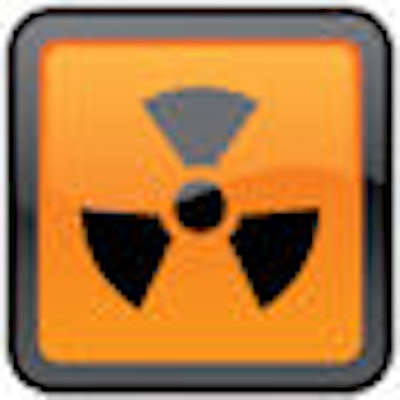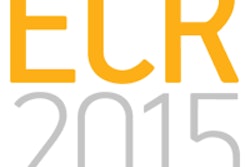
Experts from around the world convened in Washington, DC, today for a two-day symposium on finding better ways to track and utilize medical radiation dose. Collaboration is key, speakers said, because the problem of tracking radiation dose is so big that no single country or governmental agency can solve it alone.
Technology is also enabling real progress in dose monitoring and tracking, speakers said at the 2011 Gilbert Beebe Symposium: Tracking Radiation Exposure From Medical Diagnostic Procedures. Agencies and healthcare centers and governments are leveraging a flurry of advances in healthcare IT to deliver the first truly accurate dose tracking and monitoring methods.
Increasingly the developers of these new data collection techniques are working together, because it really will take a village -- and a global one at that -- to track radiation doses from medical procedures worldwide and ensure patient safety for millions of radiation procedures performed each year.
The symposium is being sponsored by the U.S. National Academy of Sciences, the National Institute of Engineering, the Institute of Medicine, and the National Research Council, and it will feature speakers from the radiology, medical physics, and regulatory communities.
In places with good plans and a solid technology infrastructure in place -- Estonia, for example -- the job of radiation dose tracking becomes easier. In places without PACS or electronic medical records, including many medical facilities in the U.S., things get more difficult.
Dose tracking and patient registries also require a lot of money, a critical problem in these days of shrunken budgets and funding cuts, said each presenter in the opening session, which included representatives from the U.S. Food and Drug Administration (FDA), the U.S. Department of Veterans Affairs (VA), the International Atomic Energy Agency (IAEA), and the American College of Radiology (ACR).
Dose tracking systems and the dose registries they support have enormous value in guiding the care of patients, optimizing imaging protocols, justifying the need for exams, assessing the potential harms of radiation-bearing medical procedures, and facilitating research on utilization trends and population dose, said Charles Miller from the FDA. But several tools need to be in place to do it, he said.
"We can use this kind of information to provide individual risk assessments ... and at least theoretically communicate an estimate of stochastic risk for each individual patient," Miller said. "For this we need information on all previous examinations using ionizing radiation, and in order to track that, we need protected health information so we can identify the patient. We don't need facility identifiers, but we do need some sort of dose data."
For this job, the FDA sees its role as providing expertise in the development of diagnostic reference levels, working with manufacturers and equipment users to standardize dose reporting, working with federal agencies and nongovernmental organizations to support registry development efforts, and developing educational materials, Miller said. Technology has come a long way since the 1970s, when the FDA introduced a pocket radiation dose card for patients to log each imaging exam they received, he said.
The following principles should guide efforts to develop a dose registry:
- Facilities should be able to participate for no cost or minimal cost.
- Data should be collected from every facility that produces it, including dental and medical offices.
- The resulting data should be available, with safeguards, to the public and to researchers.
Developers should ensure that reference dose levels serve as a quality assurance tool, not a legal standard, Miller said. Nor are registries designed for use by individual patients or for individual exams. Other key questions to be explored are who will design and operate the registry, who will store and analyze the data, and who will pay for it, he said.
The history of dose tracking
In his presentation, Dr. Fred Mettler, emeritus chair of radiology at the University of New Mexico, discussed efforts in the U.S. to track radiation dose going back to the 1950s.
"A decade ago, we would have said that tracking dose and doing all of this was impossible, because most of it was on paper," he said. In the years since, digitalization of dose tracking and the application of computer systems have revolutionized the task, he said.
There has also been a lot of interest by physicians, the ACR, and the U.S. government, but probably the most important factor has been the mainstream media, which has played a big role in public awareness of radiation overexposures, he noted.
We know less than we should about radiation dose for several reasons, he said, including.
- Disparate and incomplete sources of data for procedure volume and frequency
- Injection differences in nuclear medicine
- Scanner issues, including scanners without dose indexes and detailed information about the beam orientation
- Widely variable patient dose due to patient size and shape, about which little is known but without which real doses cannot be determined
- A paucity of public dose information
The FDA conducted national surveys on exposure in the 1970s, but unfortunately the agency stopped, probably due to budget issues, leaving huge data gaps throughout the 1980s and 1990s, he said. Medicare payment data and the VA have stepped in with some dose information.
Lacking broad government support, benchmark data have come from sources such as market research firm IMV Medical Information Division, which pays hospitals to obtain their dose data, Mettler said. Taking all of the sources together, some 40% to 60% of the data from hospitals and other large sources of radiation use is captured, while much less is known about smaller providers and niche sources such as chiropractors.
International efforts
In his remarks, Madan Rehani, PhD, a radiation safety specialist from the IAEA and member of the International Commission on Radiological Protection's (ICRP) Committee 3, discussed the IAEA's efforts to collect patient dose information.
A new version of the organization's Basic Safety Standards (BSS), just released last month after a four-year review, requires facilities to obtain information about previous diagnostic exams and consider them for justification of the exam, he said. The European BSS, currently in the approval process with the European Parliament, has the same requirements and should be complete in the next couple of months. Still, he said, neither BSS version includes specific requirements for radiation dose tracking.
The European Union has signed a memorandum of understanding to share healthcare data with the U.S. by 2015, Rehani added.
The IAEA's dose tracking efforts got under way quite early with the introduction of the IAEA Smart Card/SmartRadTrack project in 2003; available technology is only now allowing full development of the project, he said. Entities around the world initially reacted negatively, complaining that comprehensive dose tracking wasn't feasible and might even implicate hospital staff in cases of radiation misadministration. In some measures, it wasn't ready, he said.
"Looking back, I feel it was good that we did not pursue it aggressively about five years ago, because radiation measurements weren't really matured to the [level] they are today," he said.
Ideally, the Smart Card would give patients and providers access to comprehensive dose information, though the information is not stored on the card any more than a customer's money is stored on an ATM card, he said.
Wherever the electronic Smart Card is not possible currently, the paper card is an excellent tool if used, but a drawback is that the information stays only with the patient and not with the healthcare system, he said. And it is highly dependent on providers, individual countries using the dose monitoring technologies, and patients to be effective. As of now, most of the bugs have been worked out, and the project is ready to launch, he said.
In this project, he remarked that the IAEA has resolved to use reference dose quantities for recording radiation doses. It's the job of medical physicists to convert those levels into a useable, standardized form, like effective dose in CT dose index volume (CTDIvol). And radiation dose from nuclear medicine injected agents is an area that needs much more work, he said.
One of the stellar examples of successful dose tracking is in Estonia, which has a national PACS system; standardized procedures for every exam and modality, including mammography; and participation by virtually every provider from academic hospitals to private practices, Rehani said.
Every patient has a permanent patient identifier number that is included on every exam and every modality -- an essential part of the process. By inputting the identifier, one can determine the date and dose details of every exam. Finland and Denmark also have excellent programs.
A recent IAEA survey that dealt with willingness to track radiation exposures garnered responses from 76 countries. Almost 90% of countries said dose tracking would be extremely useful or very useful, he said. But most countries in the IAEA survey said they weren't doing it; nearly all citing a lack of available technology.
A joint position statement will be developed at a meeting in January 2012 based on input from the world's leading radiology and health organizations, including the World Health Organization, the European Commission, the International Society of Radiology, and the International Organization for Medical Physics, said.
Wrapping up the symposium's opening session, Richard Morin, PhD, an ACR fellow from the Mayo Clinic in Jacksonville, FL, discussed the ACR's Dose Index Registry pilot project launched in May. Morin's comments were echoed in a talk last week at the 2011 RSNA meeting in Chicago and are the subject of an AuntMinnie.com article.
The symposium, which ends December 9, can be accessed live by clicking here.



















